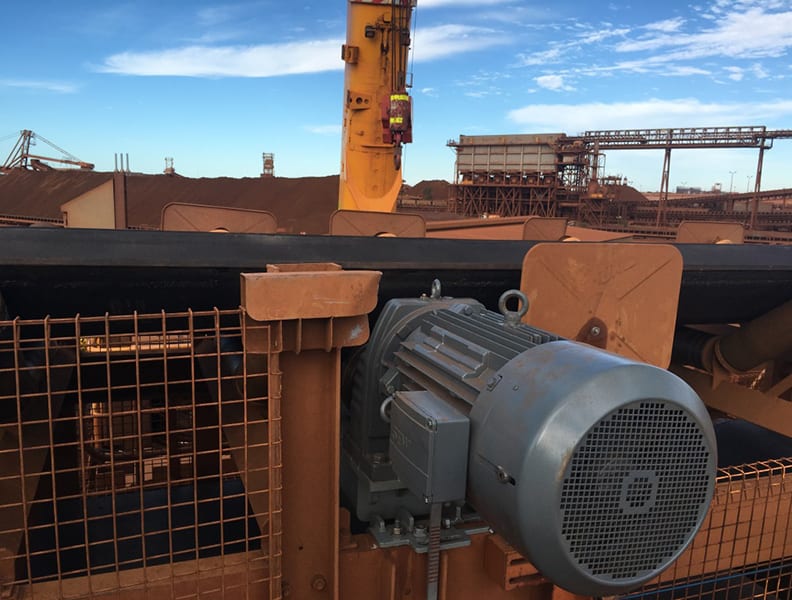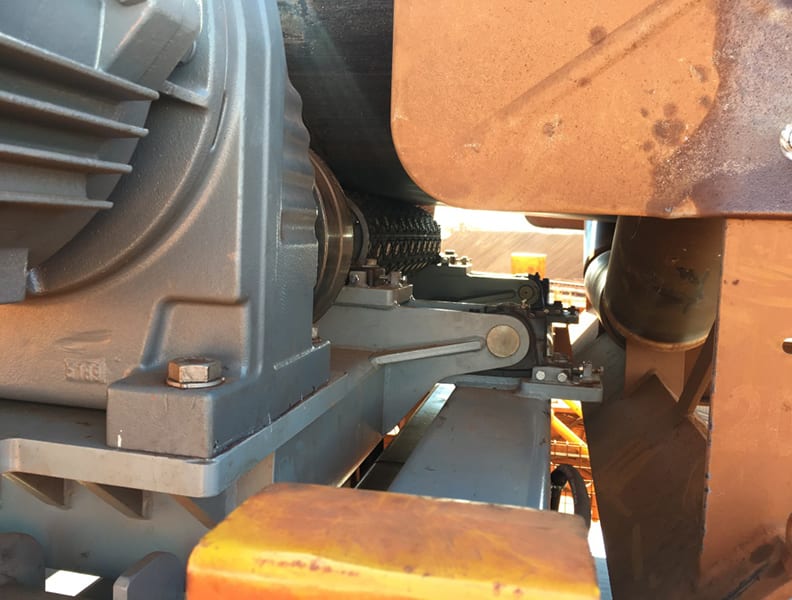Ever since the first conveyor system was developed in the 18th century and consisted of a leather belt and hand cranked wooden pulleys, engineers have been refining the device to maximise its operation and efficiency in transporting goods and resources.
Ahmad Fleyfel, Curtin alumnus and Technical Manager of Conveyor Products and Solutions (CPS) in Perth, Western Australia, has engineered a new drive system for conveyors typically used in the iron ore industry or other bulk material handling applications. The system can add power to the belt at any point along its length, effectively optimising plant power and infrastructure on mine sites.
Traditional conveyor systems have a single drive unit and input power at only one point along the conveyor. This results in high belt tension which is usually counteracted by a thicker, heavier belt. This in turn requires larger pulleys, which then demands solid surrounding structures and components. Ultimately, many conveyor systems are large, unwieldy structures that are expensive to operate and maintain.
By adding power to the belt at any location along its length using individual drive units, Fleyfel’s innovation allows for a much more efficient and economical conveyor system, and also enables conveyors to be upgraded rather than fully replaced.

“The distributed drive technology has a variety of benefits – but at the core of it all, it adds options, both to the conveyor itself, and to the surrounding infrastructure and mine,” says Fleyfel.
“On a new conveyor system, the technology can reduce the capital outlay and operational expense of the conveyor and surrounding plant through reduction in component specifications and new opportunities in plant layout – the driven units can assist the belt in tracking more tightly around bends, for example.
“On existing conveyors, it can be used to cheaply retrofit power without needing to upgrade other components, or to change distributions of tension throughout the belt in order to solve conveyor belt tracking, liftoff or other operational issues. The key is that the technology provides new solutions to a broad range of issues that previously had to be worked around.
“The distributed drive system is made up of a series of anywhere from individual, to dozens or hundreds of drive units, depending on power requirements. Typical drive units are in the area of 5-30kW. Installations can be hundreds or thousands of kW,” explains Fleyfel.
“The individual drive units are simple pulleys with minimal angle of wrap, that fit between and replace existing conveyor rollers. They are run by a standard induction motor, and are equipped with a traction control system enabled by variable speed drives. They are controlled by a higher level power distribution controller, which distributes torque in order to reach target conveyor speeds and other requirements.”

Did you know?
- The first steam powered conveyor belt was used by the British Navy in 1804 to make biscuits for their sailors.
- The most famous conveyor system is arguably the one used by Henry Ford in the production of Model T cars from 1913. Moving cars along an assembly line meant workers didn’t have to move their tools each time, and resulted in one car being made every 24 seconds!
- The longest belt conveyor system in the world is in Western Sahara. It is 98km long, and transports phosphate from the mines in Bu Craa to the coast south of El-Aaiun.
The first prototype was installed on an existing conveyor system for a mining operator in Australia, and achieved the outcome of delaying an upgrade to the original system by providing power to the belt and taking the load off the main drive unit.
The device can offer significant solutions for mine site operations and expenditures, but Fleyfel says there is still room for development, and it can be a challenge to convince an industry to invest in new technologies, which inherently come with an element of risk.
“The high cost of failure contributes to a reluctance to deviate from methods that have always been used in the past,” he says.
“However, the variability and value of the problems in the industry creates an environment ripe for the benefits that innovation can bring.”
Fleyfel’s breakthrough conveyor system technology was officially recognised when he was named one of Australia’s Most Innovative Engineers for 2017 in the mining, oil and gas category. The mechanical engineer was humbled by the award and says he will keep working with CPS to refine conveyor systems and their industry applications.
“Our vision is to break the inertia that has been generated in the industry through decades of using the same methods, and draw out as yet untapped new sustainable value through superior engineering solutions.”



